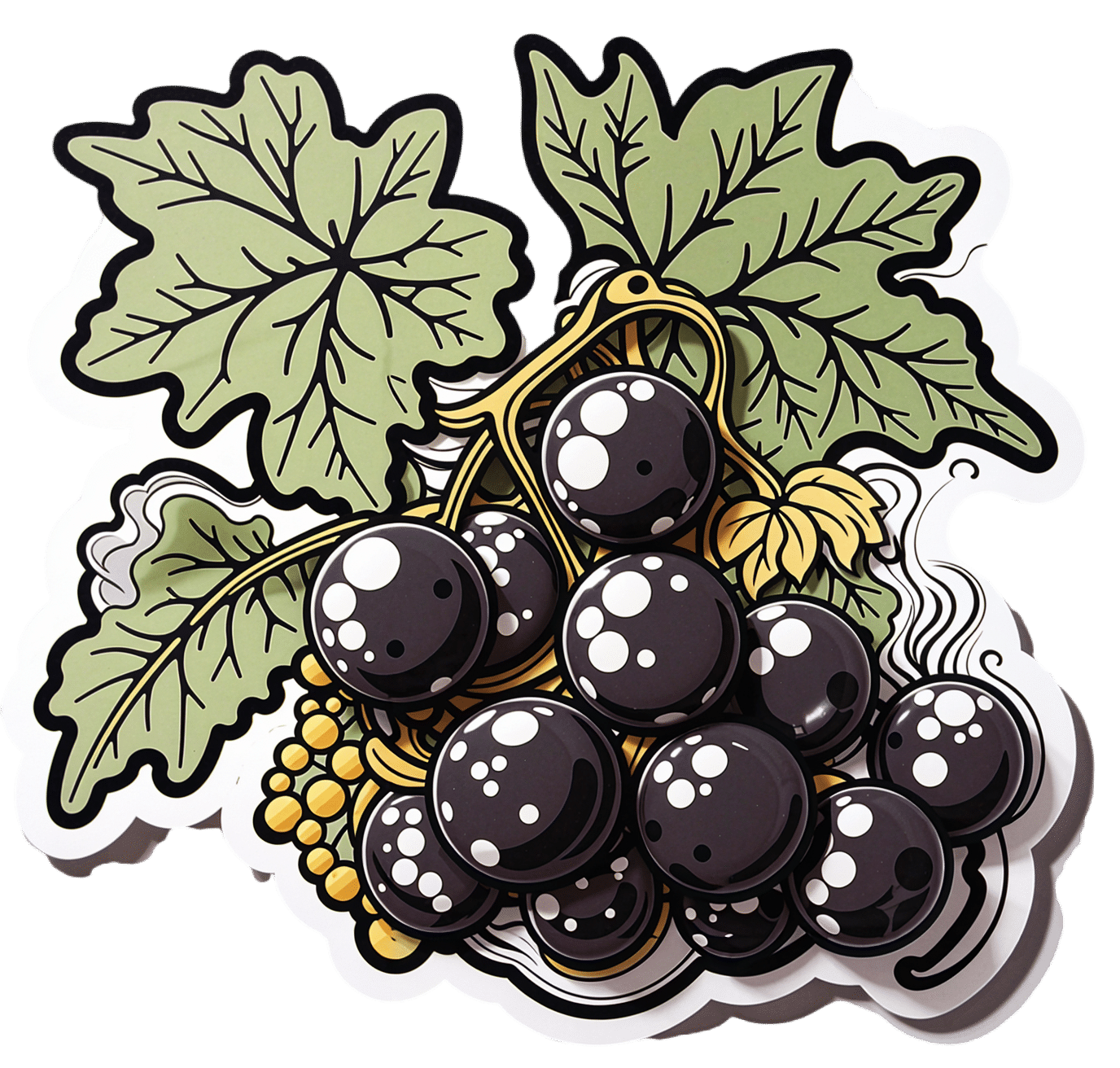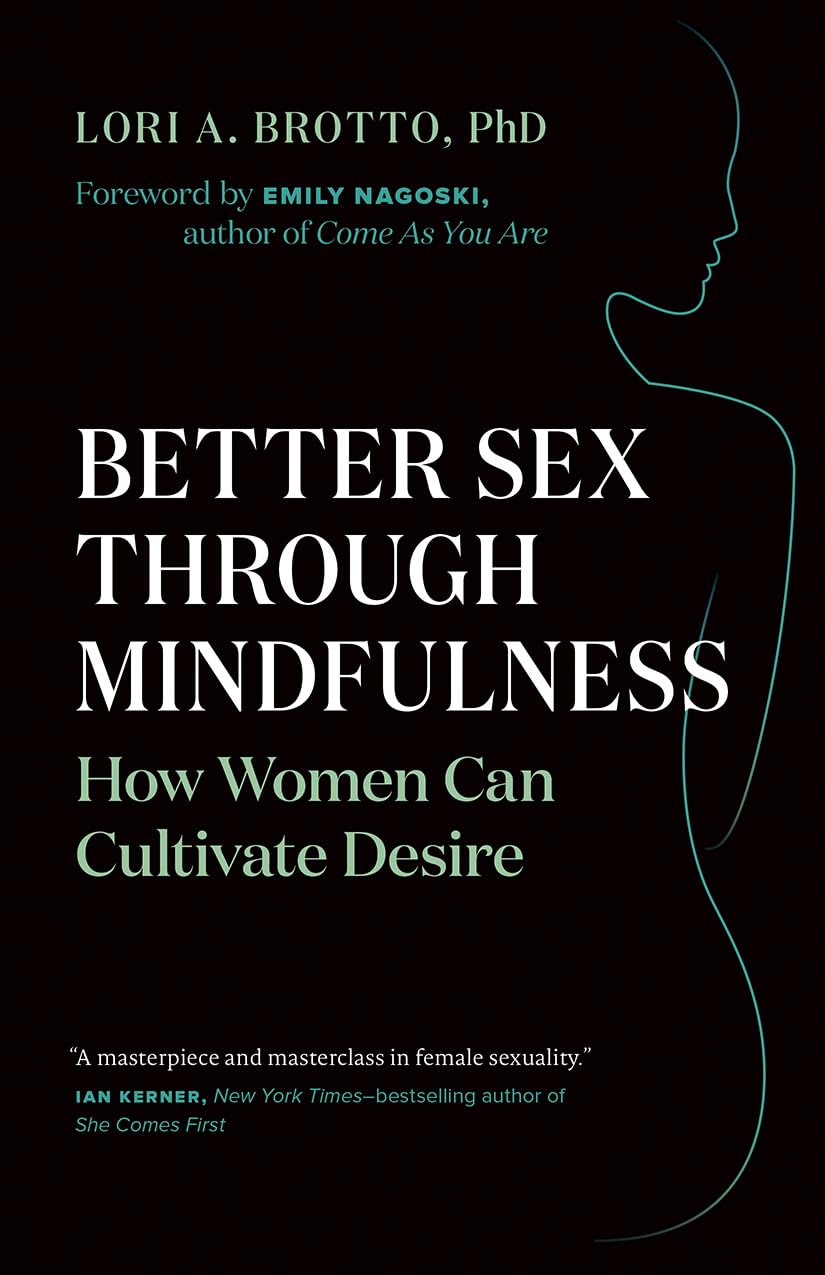
The Joy Of Missing Out
10almonds is reader-supported. We may, at no cost to you, receive a portion of sales if you purchase a product through a link in this article.
What this is not going to be: a sour grapes thing.
What this is going to be: an exploration of how the grass is greener on the other side of the fence wherever you water it
It’s easy to feel lonely and isolated, even in today’s increasingly-connected world. We’ve tackled that topic before:
How To Beat Loneliness & Isolation
One of the more passive (but still reasonable) ways of reducing isolation is to simply say “yes” more, which we discussed (along with other more active strategies) here:
When The World Moves Without Us… Can We Side-Step Age-Related Alienation?
But, is there any benefit to be gained from not being in the thick of things?
Sometimes some things associated with isolation are not, in reality, necessarily isolating. See for example:
But, the implications of embracing the “joy of missing out” are much more wide-reaching:
Wherever you are, there you are
You’ve probably read before the phrase “wherever you go, there you are”, but this phrasing brings attention to the fact that you already are where you are.
There are quite possibly aspects of your current life/situation that are not ideal, but take a moment to appreciate where you are in life. At the very least, you are probably in a safe warm dry house with plenty of food available; chances are you have plenty of luxuries too.
See also: How To Get Your Brain On A More Positive Track (Without Toxic Positivity)
And yet, it’s easy to have a fear of missing out. Even billionaires fear they do not have enough and must acquire more in order to be truly secure and fulfilled.
As it goes for material wealth, so it also goes for social wealth—in other words, we may worry about such questions as: on whom can we rely, and who will be there for us if we need them? Do we, ultimately, have enough social capital to be secure?
- For social media influencers, it’ll be follower counts and engagement.
- For the family-oriented, it might be the question of whose house a given holiday gets celebrated at, and who attends, and who does it best.
- In more somber matters, think about funerals, and those where “there was such a huge turnout” vs “almost nobody attended”.
It sure sounds a lot like a dog-eat-dog world in which missing out sucks! But it doesn’t have to.
So let’s recap: your current situation is probably, all things considered, not bad. There is probably much in life to enjoy. If people do not come to your holiday event, then those are not people who would have improved things for you. If people do not attend your funeral even, then well, you yourself will be late, so hey.
Right now though, you are alive, so…
Enjoy the moment; enjoy your life for you.
Invest in yourself. Better yourself. Improve your environment for yourself little by little.
We spend a lot of time in life living up to everyone’s expectations, often without stopping to question whether it is what we want, or sometimes putting aside what we want in favor of what is wanted of us.
- Sometimes, such ostensible altruism is laudable and good (the point of today’s article is not “be a selfish jerk”; sometimes we should indeed shelve our self-interest in favour of doing something for the common good)
- Sometimes, it’s just pointless sacrifice that benefits nobody (the point of today’s article is “there is no point in playing stressful, stacked games when you could have a better time not doing that”)
If you are about to embark on an endeavor that you don’t really want to, take a moment to seriously consider which of the above two situations this is, and then act accordingly.
For a deeper dive into that, you might like this book that we reviewed a while back:
The Joy of Saying No – by Natalie Lue
Enjoy!
Don’t Forget…
Did you arrive here from our newsletter? Don’t forget to return to the email to continue learning!
Recommended
Learn to Age Gracefully
Join the 98k+ American women taking control of their health & aging with our 100% free (and fun!) daily emails:
-
Eat All You Want (But Wisely)
10almonds is reader-supported. We may, at no cost to you, receive a portion of sales if you purchase a product through a link in this article.
Some Surprising Truths About Hunger And Satiety
This is Dr. Barbara Rolls. She’s Professor and Guthrie Chair in Nutritional Sciences, and Director of the Laboratory for the Study of Human Ingestive Behavior at Pennsylvania State University, after graduating herself from Oxford and Cambridge (yes, both). Her “awards and honors” take up four A4 pages, so we won’t list them all here.
Most importantly, she’s an expert on hunger, satiety, and eating behavior in general.
What does she want us to know?
First and foremost: you cannot starve yourself thin, unless you literally starve yourself to death.
What this is about: any weight lost due to malnutrition (“not eating enough” is malnutrition) will always go back on once food becomes available. So unless you die first (not a great health plan), merely restricting good will always result in “yo-yo dieting”.
So, to avoid putting the weight back on and feeling miserable every day along the way… You need to eat as much as you feel you need.
But, there’s a trick here (it’s about making you genuinely feel you need less)!
Your body is an instrument—so play it
Your body is the tool you use to accomplish pretty much anything you do. It is, in large part, at your command. Then there are other parts you can’t control directly.
Dr. Rolls advises taking advantage of the fact that much of your body is a mindless machine that will simply follow instructions given.
That includes instructions like “feel hungry” or “feel full”. But how to choose those?
Volume matters
An important part of our satiety signalling is based on a physical sensation of fullness. This, by the way, is why bariatric surgery (making a stomach a small fraction of the size it was before) works. It’s not that people can’t eat more (the stomach is stretchy and can also be filled repeatedly), it’s that they don’t want to eat more because the pressure sensors around the stomach feel full, and signal the hormone leptin to tell the brain we’re full now.
Now consider:
- On the one hand, 20 grapes, fresh and bursting with flavor
- On the other hand, 20 raisins (so, dried grapes), containing the same calories
Which do you think will get the leptin flowing sooner? Of course, the fresh grapes, because of the volume.
So if you’ve ever seen those photos that show two foods side by side with the same number of calories but one is much larger (say, a small slice of pizza or a big salad), it’s not quite the cheap trick that it might have appeared.
Or rather… It is a cheap trick; it’s just a cheap trick that works because your stomach is quite a simple organ.
So, Dr. Rolls’ advice: generally speaking, go for voluminous food. Fruit is great from this, because there’s so much water. Air-popped popcorn also works great. Vegetables, too.
Water matters, but differently than you might think
A well-known trick is to drink water before and with a meal. That’s good, it’s good to be hydrated. However, it can be better. Dr. Rolls did an experiment:
The design:
❝Subjects received 1 of 3 isoenergetic (1128 kJ) preloads 17 min before lunch on 3 d and no preload on 1 d.
The preloads consisted of 1) chicken rice casserole, 2) chicken rice casserole served with a glass of water (356 g), and 3) chicken rice soup.
The soup contained the same ingredients (type and amount) as the casserole that was served with water.❞
The results:
❝Decreasing the energy density of and increasing the volume of the preload by adding water to it significantly increased fullness and reduced hunger and subsequent energy intake at lunch.
The equivalent amount of water served as a beverage with a food did not affect satiety.❞
The conclusion:
❝Consuming foods with a high water content more effectively reduced subsequent energy intake than did drinking water with food.❞
You can read the study in full (it’s a worthwhile read!) here:
Water incorporated into a food but not served with a food decreases energy intake in lean women
Protein matters
With all those fruits and vegetables and water, you may be wondering Dr. Rolls’ stance on proteins. It’s simple: protein is an appetite suppressant.
However, it takes about 20 minutes to signal the brain about that, so having some protein in a starter (if like this writer, you’re the cook of the household, a great option is to enjoy a small portion of nuts while cooking!) gets that clock ticking, to signal satiety sooner.
It may also help in other ways:
Clinical Evidence and Mechanisms of High-Protein Diet-Induced Weight Loss
As for other foods that can suppress appetite, by the way, you might like;
25 Foods That Act As Natural Appetite Suppressants
Variety matters, and in ways other than you might think
A wide variety of foods (especially: a wide variety of plants) in one’s diet is well recognized as a key to a good balanced diet.
However…
A wide variety of dishes at the table, meanwhile, promotes greater consumption of food.
Dr. Rolls did a study on this too, a while ago now (you’ll see how old it is) but the science seems robust:
Variety in a Meal Enhances Food Intake in Man
Notwithstanding the title, it wasnot about a man (that was just how scientists wrote in ye ancient times of 1981). The test subjects were, in order: rats, cats, a mixed group of men and women, the same group again, and then a different group of all women.
So, Dr. Rolls’ advice is: it’s better to have one 20-ingredient dish, than 10 dishes with 20 ingredients between them.
Sorry! We love tapas and buffets too, but that’s the science!
So, “one-pot” meals are king in this regard; even if you serve it with one side (reasonable), that’s still only two dishes, which is pretty good going.
Note that the most delicious many-ingredient stir-fries and similar dishes from around the world also fall into this category!
Want to know more?
If you have the time (it’s an hour), you can enjoy a class of hers for free:
Want to watch it, but not right now? Bookmark it for later
Enjoy!
Share This Post
-
Grapefruit vs Orange – Which is Healthier?
10almonds is reader-supported. We may, at no cost to you, receive a portion of sales if you purchase a product through a link in this article.
Our Verdict
When comparing grapefruit to orange, we picked the orange.
Why?
It’s easy, when guessing which is the healthier out of two things, to guess that the more expensive or perhaps less universally available one is the healthier. But it’s not always so, and today is one of those cases!
In terms of macros, they are very similar fruits, with almost identical levels of carbohydrates, proteins, and fats, as well as water. Looking more carefully, we find that grapefruit’s sugars contain a slightly high proportion of fructose; not enough to make it unhealthy by any means (indeed, no whole unprocessed fruit is unhealthy unless it’s literally poisonous), but it is a thing to note if we’re micro-analysing the macronutrients. Also, oranges have slightly more fiber, which is always a plus.
When it comes to vitamins, oranges stand out with more of vitamins B1, B2, B3, B6, B9, C, and E, while grapefruit boasts more vitamin A (hence its color). Still, we’re calling this category another win for oranges.
In the category of minerals, oranges again sweep with more calcium, copper, iron, magnesium, manganese, potassium, and selenium, while grapefruit has just a little more phosphorus. So, another easy win for oranges.
One final consideration that’s not shown in the nutritional values, is that grapefruit contains furanocoumarin, which can inhibit cytochrome P-450 3A4 isoenzyme and P-glycoptrotein transporters in the intestine and liver—slowing down their drug metabolism capabilities, thus effectively increasing the bioavailability of many drugs manifold. It can also be found in lower quantities in Seville (sour) oranges, and it’s not present (or at least, if it is, it’s in truly tiny quantities) in most oranges.
This may sound superficially like a good thing (improving bioavailability of things we want), but in practice it means that in the case of many drugs, if you take them with (or near in time to) grapefruit or grapefruit juice, then congratulations, you just took an overdose. This happens with a lot of meds for blood pressure, cholesterol (including statins), calcium channel-blockers, anti-depressants, benzo-family drugs, beta-blockers, and more. Oh, and Viagra, too. Which latter might sound funny, but remember, Viagra’s mechanism of action is blood pressure modulation, and that is not something you want to mess around with unduly. So, do check with your pharmacist to know if you’re on any meds that would be affected by grapefruit or grapefruit juice!
All in all, today’s sections add up to an overwhelming win for oranges!
Want to learn more?
You might like to read:
Take care!
Share This Post
-
Exercises for Sciatica Pain Relief
10almonds is reader-supported. We may, at no cost to you, receive a portion of sales if you purchase a product through a link in this article.
Jessica Valant is a physiotherapist and Pilates teacher, and today she’s going to demonstrate some exercise that relieve (and also correct the cause of) sciatica pain.
Back to good health
You will need a large strap for one of these exercises; a Pilates strap is great, but you can also use a towel. The exercises are:
Pelvic Rocking Exercise:
- Lie on your back, feet flat, knees bent.
- Gently rock your pelvis forwards and backwards (50% effort, no glute squeezing).
Leg Stretch with Strap:
- Straighten your left leg and loop the strap around the ball of your right foot.
- Gently straighten and bend your right leg while holding the strap.
- Perform a “nerve glide” by flexing and pointing your foot (not a stretch, just gentle movement).
- Repeat on the left leg.
Piriformis Stretch:
- Bend your right knee and place your left ankle over it (figure-four position).
- For a deeper stretch, hold your right thigh and pull your legs inwards.
Lower Back Release:
- Let your legs fall gently to one side after stretching each leg, opening the lower back.
Back Extension:
- Lie on your belly, placing your elbows down, palms flat.
- Optional: push up slightly into a back bend if it feels comfortable.
Seated Stretching:
- Finish by sitting cross-legged or on a chair.
- Inhale while raising your arms up, exhale while lowering them down, then reach sideways with your arms to stretch.
- Perform gentle neck stretches by tilting your ear to your shoulder on each side.
She recommends doing these exercises daily for at least a few weeks, though you should start to see improvement in your symptoms immediately. Nothing here should cause a problem or make things worse, but if it does, stop immediately and consult a local physiotherapist for more personalized advice.
For more on all of this, plus visual demonstrations, enjoy:
Click Here If The Embedded Video Doesn’t Load Automatically!
Want to learn more?
You might also like to read:
6 Ways To Look After Your Back
Take care!
Share This Post
Related Posts
-
Water Fluoridation, Atheroma, & More
10almonds is reader-supported. We may, at no cost to you, receive a portion of sales if you purchase a product through a link in this article.
It’s Q&A Day at 10almonds!
Have a question or a request? You can always hit “reply” to any of our emails, or use the feedback widget at the bottom!
In cases where we’ve already covered something, we might link to what we wrote before, but will always be happy to revisit any of our topics again in the future too—there’s always more to say!
As ever: if the question/request can be answered briefly, we’ll do it here in our Q&A Thursday edition. If not, we’ll make a main feature of it shortly afterwards!
So, no question/request too big or small 😎
❝I watched a documentary recently on Fluoride in our drinking water & the dangers of it. Why are we poisoning our water?❞
This is a great question, and it certainly is controversial. It sounds like the documentary you watched was predominantly or entirely negative, but there’s a lot of science to back both sides of this, and it’s not even that the science is contradictory (it’s not). It’s that what differs is people’s opinions about whether benefiting one thing is worth creating a risk to another, and that means looking at:
- What is the risk associated with taking no action (error of omission)?
- What is the risk associated with taking an action (error of commission)?
The whole topic is worth a main feature, but to summarize a few key points:
- Water fluoridation is considered good for the prevention of dental cavities
- Water fluoridation aims to deliver fluoride and doses far below dangerous levels
- This requires working on consumer averages, though
- ”Where do we put the safety margins?” is to some extent a subjective question, in terms of trading off one aspect of health for another
- Too much fluoride can also be bad for the teeth (at least cosmetically, creating little white* spots)
- Detractors of fluoride tend to mostly be worried about neurological harm
- However, the doses in public water supplies are almost certainly far below the levels required to cause this harm.
- That said, again this is working on consumer averages, though.
- However, the doses in public water supplies are almost certainly far below the levels required to cause this harm.
- A good guide is: watch your teeth! Those white* spots will be “the canary in the coal mine” of more serious harm that could potentially come from higher levels due to overconsumption of fluorine.
*Teeth are not supposed to be pure white. The “Hollywood smile” is a lie. Teeth are supposed to be a slightly off-white, ivory color. Anything whiter than that is adding something else that shouldn’t be there, or stripping something off that should be there.
❝How does your diet change clean out your arteries of the bad cholesterol?❞
There’s good news and bad news here, and they can both be delivered with a one-word reply:
Slowly.
Or rather: what’s being cleaned out is mostly not the LDL (bad) cholesterol, but rather, the result of that.
When our diet is bad for cardiovascular health, our arteries get fatty deposits on their walls. Cholesterol gets stuck here too, but that’s not the main physical problem.
Our body’s natural defenses come into action and try to clean it up, but they (for example macrophages, a kind of white blood cell that consumes invaders and then dies, before being recycled by the next part of the system) often get stuck and become part of the buildup (called atheroma), which can lead to atherosclerosis and (if calcium levels are high) hardening of the arteries, which is the worst end of this.
This can then require medical attention, precisely because the body can’t remove it very well—especially if you are still maintaining a heart-unhealthy diet, thus continuing to add to the mess.
However, if it is not too bad yet, yes, a dietary change alone will reverse this process. Without new material being added to the arterial walls, the body’s continual process of rejuvenation will eventually fix it, given time (free from things making it worse) and resources.
In fact, your arteries can be one of the quickest places for your body to make something better or worse, because the blood is the means by which the body moves most things (good or bad) around the body.
All the more reason to take extra care of it, since everything else depends on it!
You might also like our previous main feature:
Don’t Forget…
Did you arrive here from our newsletter? Don’t forget to return to the email to continue learning!
Learn to Age Gracefully
Join the 98k+ American women taking control of their health & aging with our 100% free (and fun!) daily emails:
-
Better Sex Through Mindfulness – by Dr. Lori Brotto
10almonds is reader-supported. We may, at no cost to you, receive a portion of sales if you purchase a product through a link in this article.
Female sexuality is such a taboo topic that, if one searches for (ob/gyn professor, women’s health research director, and psychologist) Dr. Brotto’s book on Google or Amazon, it suggests only “lori brotto mindfulness book”. So, for those brave enough to read a book that would have shocked Victorians, what does this one contain?
The focus is on, as the title suggests, better sex, by and for women. That said, it’s mostly because typically women are more likely to experience the problems described in the book; it’s nothing actually intrinsic to womanhood. A man with the same problems could read this book and benefit just the same.
While the book covers many possible problems between the sheets, the overarching theme is problems of the mind, such as:
- Not getting into the mood in the first place
- Losing the mood quickly and easily, such as by becoming distracted
- Difficulty achieving orgasm even when mechanically everything’s delightful
- Physical discomfort creating a barrier to enjoyment
…and yes, that last one is in part mind-stuff too! Though Dr. Brotto isn’t arguing that mindfulness is a panacea, just an incredibly useful tool. And, it’s one she not only explains very well, but also explains from the position of a wealth of scientific evidence… Enough so, that we see a one-star Amazon reviewer from Canada complained that it was too well-referenced! For us, though, it’s what we like to see.
Good science, presented clearly and usefully, giving practical tips that improve people’s lives.
Bottom line: if you’ve ever lost the mood because you got distracted into thinking about taxes or that meeting on Tuesday, this is the book for you.
Click here to check out Better Sex Through Mindfulness—you can thank us later!
Don’t Forget…
Did you arrive here from our newsletter? Don’t forget to return to the email to continue learning!
Learn to Age Gracefully
Join the 98k+ American women taking control of their health & aging with our 100% free (and fun!) daily emails:
-
Pine Bark’s Next-Level Antioxidant Properties
10almonds is reader-supported. We may, at no cost to you, receive a portion of sales if you purchase a product through a link in this article.
Pine Bark’s Next-Level Antioxidant Properties
Pine bark extract has been used by the indigenous peoples of N. America for a very long time, to treat a variety of ailments.
This one falls into the category of “things from traditional medicine that eventually got investigated and their scientific worth noticed by people from outside of those cultures”.
Not all pine trees!
If you happen to have pine trees near you, be aware that without sufficient botanical knowledge, you could find yourself bark-harvesting from the wrong tree—but many species of pine do have these qualities.
Useful (for this purpose) pine trees include, but are not limited to:
- Pinus banksiana
- Pinus massoniana
- Pinus pinaster
- Pinus radiata
- Pinus resinosa
- Pinus strobus
…which is already a fair list, but there are dozens more that have not been studied, and/or found lacking in medicinal qualities, and/or just didn’t make our list here today.
What does it do & How does it work?
We sneakily put those two questions together today because it’s easiest to explain in one:
The Pinus family in general has powerful antioxidant qualities, and not just like blueberries or coffee (wonderful as those are).
Rather, it has:
- Phenolic acids: these are the polyphenols found in many plant foods rich in antioxidants. These are great, but they aren’t the exciting part here.
- Catechins: these aren’t classified as antioxidants, but they are flavonoids that do the same job in a slightly different way
- Procyanidins: another class of flavonoids, and this is where pine bark really comes into its own
And yes, as ever, “those three things that always seem to come together”, it having these antioxidant properties means it is also anti-inflammatory and anti-cancer:
…and anti-aging:
Pleiotropic Effects of French Maritime Pine Bark Extract to Promote Healthy Aging
…which does of course mean that it almost certainly fights age-related cognitive decline, though studies for that have been animal studies so far, such as:
- Pine Bark Polyphenolic Extract Attenuates Amyloid-β and Tau Misfolding in a Model System of Alzheimer’s Disease Neuropathology
- Neuroprotective and Anti-Inflammatory Effects of Pinus densiflora Bark Extract in Gerbil Hippocampus Following Transient Forebrain Ischemia
- Neuroprotective Effects of Korean Red Pine ( Pinus densiflora) Bark Extract and Its Phenolics
- Pine bark treatment decelerates plaque development and improves spatial memory in Alzheimer’s disease mice
Where to get it?
As ever, we don’t sell it, but here’s an example product on Amazon for your convenience; we recommend shopping around though, as prices vary a lot!
Enjoy!
Don’t Forget…
Did you arrive here from our newsletter? Don’t forget to return to the email to continue learning!
Learn to Age Gracefully
Join the 98k+ American women taking control of their health & aging with our 100% free (and fun!) daily emails:








